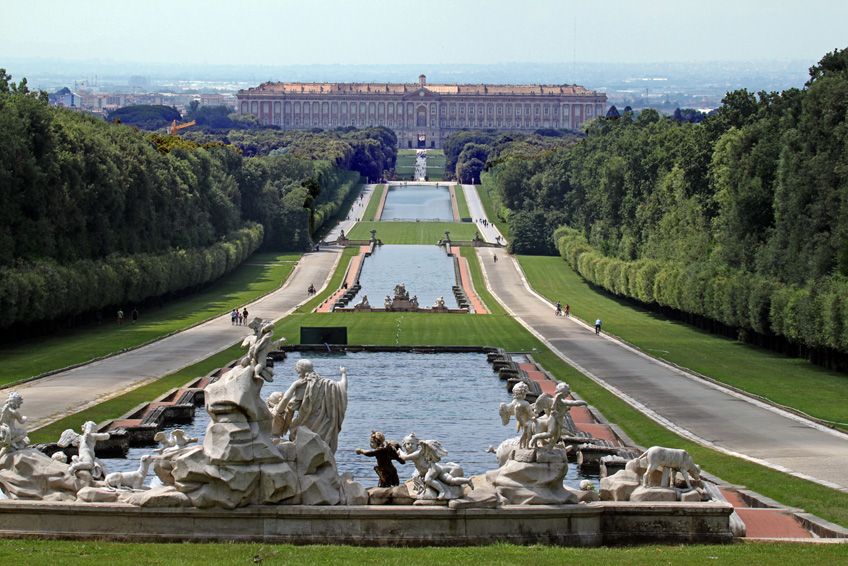
Probably founded by the Lombards in the 8th century ,on the site of a Roman emplacement atop Monte Tifata, Caserta spread onto the plains below from the 12th century on. The construction of the Bourbon's grand palace assured the town a certain grandeur it would otherwise never known.
The tourist office (0823 32 11 37)in the Palazzo Reale.
Also known as the Reggia di Caserta, this splendid palace was built by the Bourbons of Napoli. Work started in 1752 after Charles III of Bourbon decided he would build himself a palace similar to Versallies. Neapolitan Luigi Vanvitelli was commissioned for the job and established his reputation as one of the leading architects of the time after working on the palace. Covering 51.000 sq metres , with facade stretching 250m, the building is of massive proportions, with 1200 rooms, 1790 windows and 34 staircases. After entering by Vanvitelli's immense staircase, you follow a path through the royal apartments, most of them richly decorated with tapestries, furniture, mirrors and crystal. After the library is a room containing a vast collection of presepi, played out in several huge cabinets and featuring hundreds of hand-carved characters. A walk in the elegant landscaped gardens is a must. Some 3km long, the best bet is probably to take the special bus to the far end (L1500 return), marked by a waterfall and the so-called fountain of Diana and then amble your way back. Guides take groups through one garden , the Giardino Inglese , which is sprinkled with rare plants, little lakes and fake Roman ruins - all very much the taste of the day.
About 2km north-west of the Palazzo Reale (buses run from the train station) is the San Leucio silk factory, built by Ferdinand IV and still working today and open for visits. About 10km to the north-east (CPTU bus ) lies Caserta Vecchia, the decayed nucleus of the original town, including the remains of a 9th century castle and 13th century cathedral. The modern city of Santa Maria Capua Vetere (ancient Capua), about 12km west of Caserta, was populated by the Etruscans, the Samnites and later the Romans. Ruins include a 1st century AD anfiteatro, the largest in Italy after the Colosseo in Roma, which hosted a gladiator school. The famous gladiators' revolt led by Spartacus originated here. There are also remains of the Arco di Adriano ( Hadrian's Arch ), under which passed the Via Appia. Most of the artefacts from the area are now in the Museo Provinciale Campano, in the modern town of Capua, 4km away. Regular CPTC buses run from the Caserta train station to Santa Maria Capua Vetere.